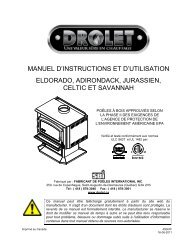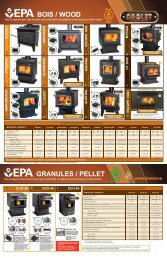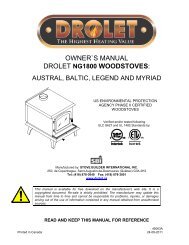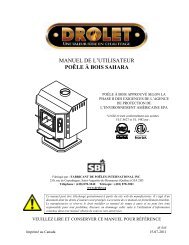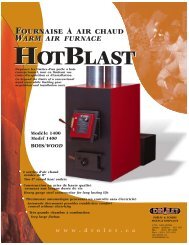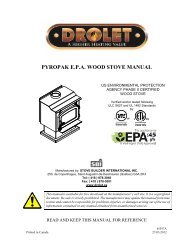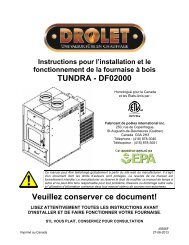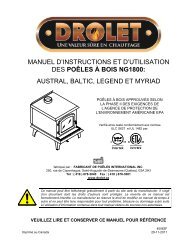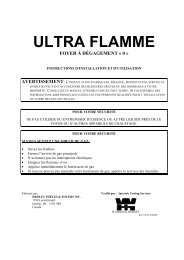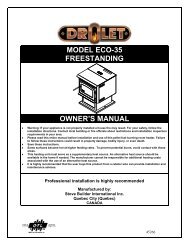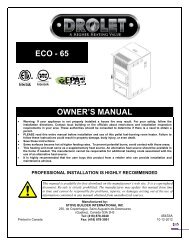Create successful ePaper yourself
Turn your PDF publications into a flip-book with our unique Google optimized e-Paper software.
Columbia Installation and Operation Manual4.3 Maintaining Wood Fires4.3.1 General AdviceWood heating with a space heater is very different than o<strong>the</strong>r forms of heating. There willbe variations in <strong>the</strong> temperature in different parts of <strong>the</strong> house and <strong>the</strong>re will be variationsin temperature throughout <strong>the</strong> day and night. This is normal, and for experienced woodburners <strong>the</strong>se are advantages of zone heating with wood.Do not expect steady heat output from your stove. It is normal for its surface temperatureto rise after a new load of wood is ignited and for its temperature to gradually decline as<strong>the</strong> fire progresses. This rising and falling of temperature can be matched to yourhousehold routines. For example, <strong>the</strong> area temperature can be cooler when you are active,such as when doing housework or cooking, and it can be warmer when you are inactive,such as when reading or watching television.Wood burns best in cycles. A cycle starts when a new load of wood is ignited by hot coalsand ends when that load has been consumed down to a bed of charcoal about <strong>the</strong> samesize as it was when <strong>the</strong> wood was loaded. Do not attempt to produce a steady heat outputby placing a single log on <strong>the</strong> fire at regular intervals. Always place at least three, andpreferably more, pieces on <strong>the</strong> fire at a time so that <strong>the</strong> heat radiated from one piece helpsto ignite <strong>the</strong> pieces next to it. Each load of wood should provide several hours of heating.The size of each load can be matched to <strong>the</strong> amount of heat needed.When you burn in cycles, you rarely need to open <strong>the</strong> stove’s loading door while <strong>the</strong> woodis flaming. This is an advantage because <strong>the</strong>re is more chance that smoke will leak from<strong>the</strong> stove when <strong>the</strong> door is opened as a full fire is burning. This is especially true if <strong>the</strong>chimney connector has 90 degree elbows and if <strong>the</strong> chimney runs up <strong>the</strong> outside wall of<strong>the</strong> house.IF YOU MUST OPEN THE DOOR WHILE THE FUEL IS FLAMING, OPEN THE AIRCONTROL FULLY FOR A FEW MINUTES, THEN UNLATCH AND OPEN THE DOORSLOWLY.4.3.2 Ash RemovalAsh should be removed from <strong>the</strong> firebox every two or three days of full time heating. Donot let <strong>the</strong> ash build up in <strong>the</strong> firebox because it will interfere with proper fire management.The best time to remove ash is after an overnight fire when <strong>the</strong> stove is relatively cool, but<strong>the</strong>re is still some chimney draft to draw <strong>the</strong> ash dust into <strong>the</strong> stove and prevent it fromcoming into <strong>the</strong> room.After ashes have been removed from <strong>the</strong> stove and placed in a tightly covered metalcontainer, <strong>the</strong>y should be taken outside immediately. The closed container of ashes shouldbe placed on a non-combustible floor or on <strong>the</strong> ground well away from all combustiblematerials pending final disposal. Ashes normally contain some live charcoal that can stayhot for several days. If <strong>the</strong> ashes are disposed of by burial in soil or o<strong>the</strong>rwise locally17



